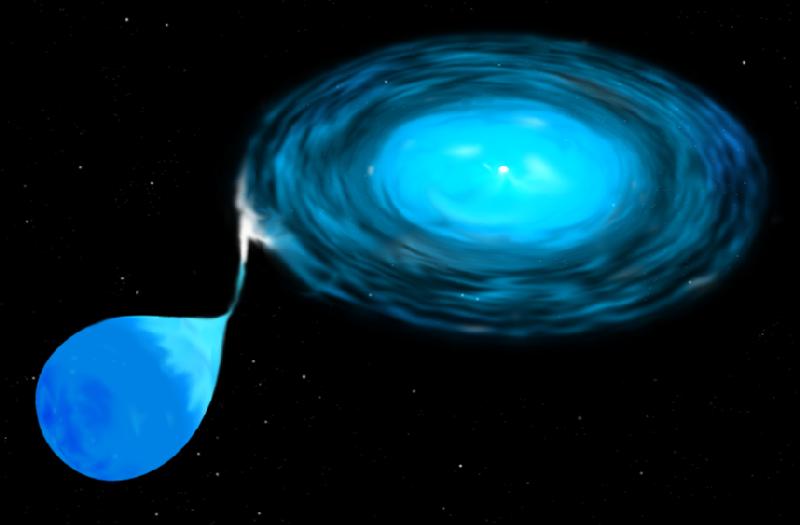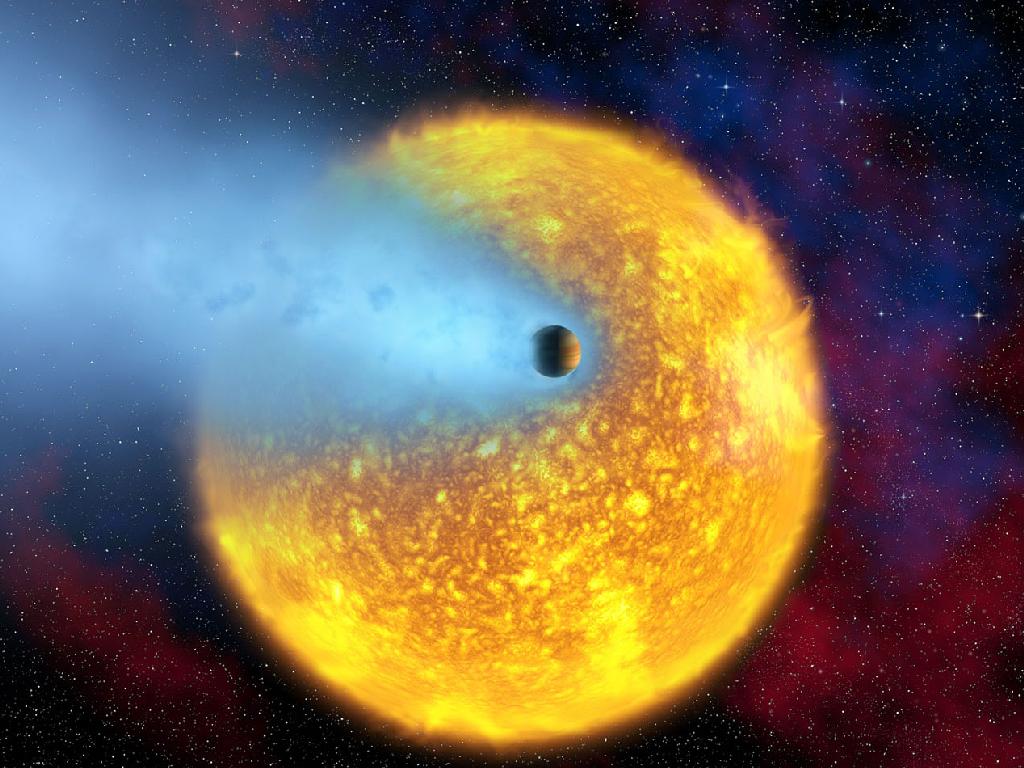A Failed Star Found Orbiting a Dead Star Every 71 Minutes

An international team of astronomers using data from the second phase of operation of the Kepler space telescope (K2 phase) has discovered a rare gem: a binary system consisting of a failed star, also known as a brown dwarf, and a remnant of a dead star known as a white dwarf. One of the properties that makes this binary system so remarkable is that the orbital period of the two objects is just 71.2 minutes. This means that the stars revolve around each other at speeds of around 100 km/s (a speed that would take you across the Atlantic in less than a minute). Using five different ground-based telescopes, including the OMM, located on three continents, the team were able to deduce that this binary system consists of a failed star with a mass of around 6.7% that of the Sun (equivalent to 67 times the mass of Jupiter) and a white dwarf with a mass of around 40% that of the Sun. They also determined that the white dwarf will begin cannibalizing the brown dwarf in less than 250 million years, giving this binary system the title of pre-cataclysmic variable with the shortest period ever discovered.
At the time of its identification in the SDSS survey, the hot white dwarf star, known as WD1202-024, was considered a single star. The fact that it is part of a tight binary system, with a period very close to 71 minutes, was announced by Professor Lorne Nelson of Bishop’s University, also a member of the Centre de recherche en astrophysique du Québec (CRAQ), at the American Astronomical Society’s semi-annual meeting in Austin, Texas, on June 6. Dr. Saul Rappaport of MIT and Andrew Vanderburg of the Harvard Smithsonian Center for Astrophysics were analyzing the light curves of more than 28,000 K2 phase targets when one caught their eye. Unlike the transits of exoplanets that pass in front of their respective parent stars and cause a small attenuation in the star’s brightness, this light curve shows larger and longer eclipses, with an additional, sinusoidal-shaped contribution to the brightness between eclipses, thought to be due to the illumination of the cool component by the much hotter white dwarf.
The team quickly devised a model for this binary system in which a hot white dwarf, composed of helium, is eclipsed by a much cooler companion, a low-mass brown dwarf, seen almost from the edge. A 3-D animation of the orbit and its light curve can be found at http://physics.ubishops.ca/wd1202/anim.mp4. Note how the hemisphere facing the hot white dwarf is strongly irradiated, while the other is rather “dark”.
However, as Professor Nelson explains, some questions remain unanswered for the time being. “We’ve built a robust model, but we still need to tie it into a broader perspective, such as how this system formed and what its ultimate fate might be”. To address this question, the team used sophisticated computer models to simulate the formation and evolution of WD1202. According to their scenario, the primordial binary system consisted of an ordinary star, 1.25 times the mass of the Sun, and a brown dwarf revolving around each other with a period of 150 days. At the end of its normal life, the star swelled to become a red giant, which then swallowed up its brown dwarf companion. As Lorne Nelson explains, “the effect is akin to using a whisk to beat eggs. The brown dwarf spirals towards the center of the red giant, forcing most of the red giant’s mass out above its core. The result is a brown dwarf in an extraordinarily tight, short-period orbit around the giant’s hot helium core. This core cools and becomes the white dwarf we observe today”. According to their calculations, the primordial binary system formed around 3 billion years ago, while the common envelope phase occurred relatively recently, around 50 million years ago.
What fate awaits this system in the future? The team believes that the emission of gravitational waves will deplete the orbital energy of the binary system so that in around 250 million years (or less), the separation between the white dwarf and the brown dwarf will become so small that the brown dwarf will be cannibalized by its neighbor. When this happens, the binary system will exhibit all the characteristics of a cataclysmic variable (CV), such as a light curve showing irregular variations due to the accretion of a disk surrounding the white dwarf. For this reason, the team believes that the WD1202 system can qualify as the pre-CV with the shortest orbital period discovered to date.
An advance copy of the article “WD 1202-024: The Shortest-Period Pre-Cataclysmic Variable,” by S. Rappaport, A. Vanderburg, L. Nelson, B. L. Gary, T. G. Kaye, B. Kalomeni, S. B. Howell, J. R. Thorstensen, F.-R. Lachapelle, M. Lundy, and J. St-Antoine, submitted to the journal Monthly Notices of the Royal Astronomical Society, is available at https://arxiv.org/abs/1705.05863: https://arxiv.org/abs/1705.05863.
Source
Chantal Sneath
Communications Officer
Bishop’s University
csneath@ubishops.ca
(819) 822-9600 x2840
Lorne Nelson
Dept. of Physics and Astronomy
Bishop’s University
lnelson@ubishops.ca
(819) 822-9600 x2372


